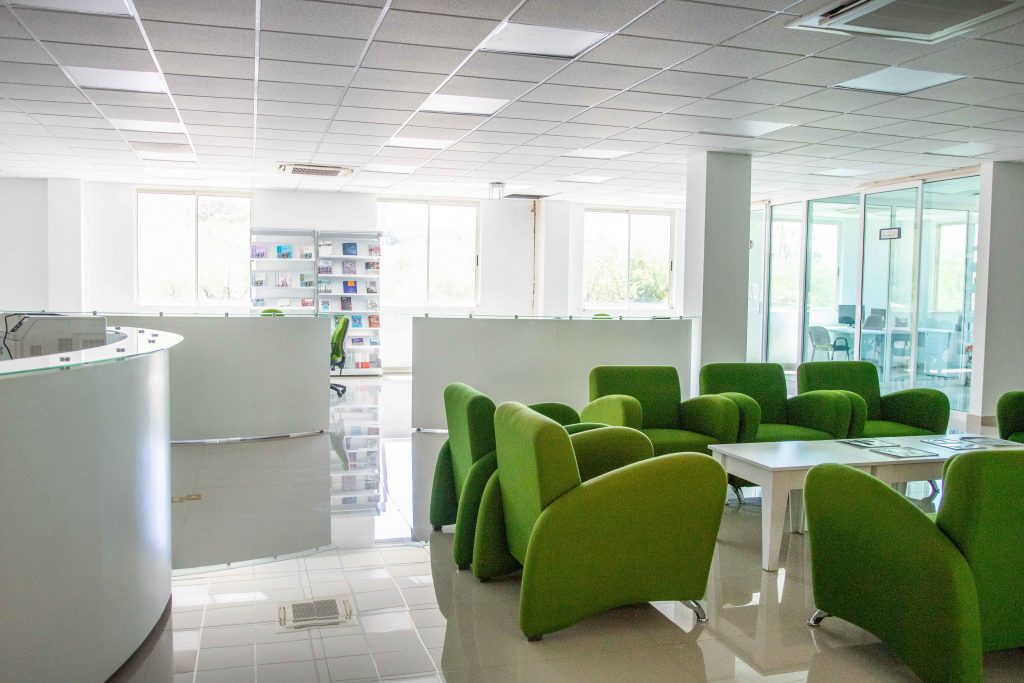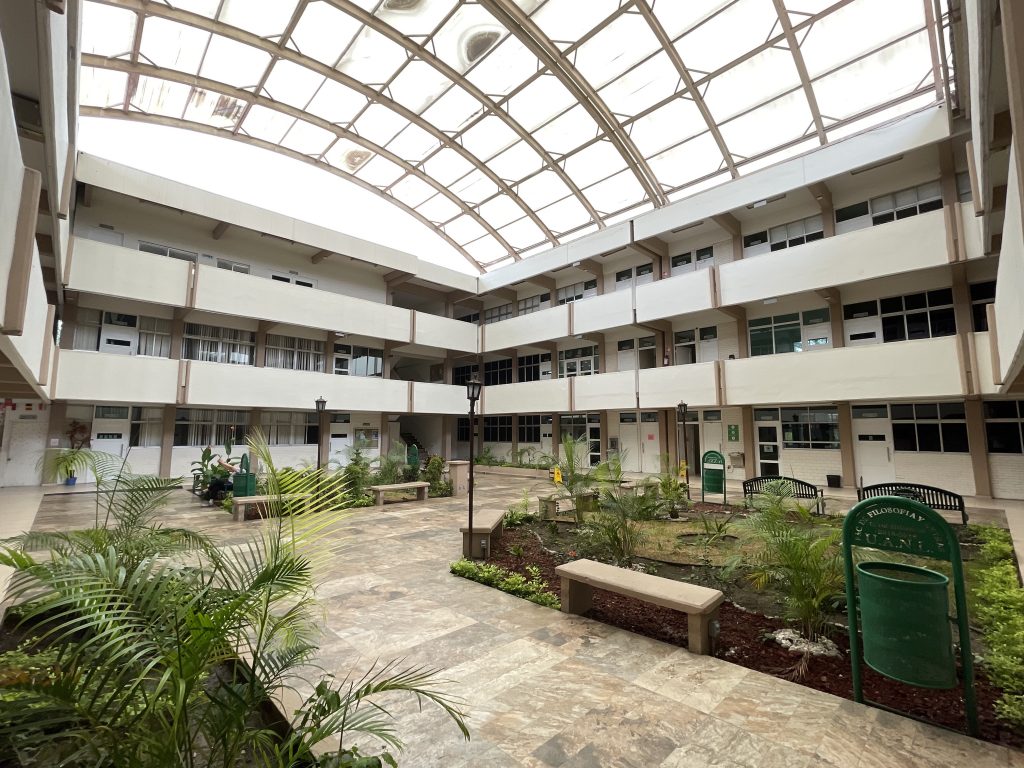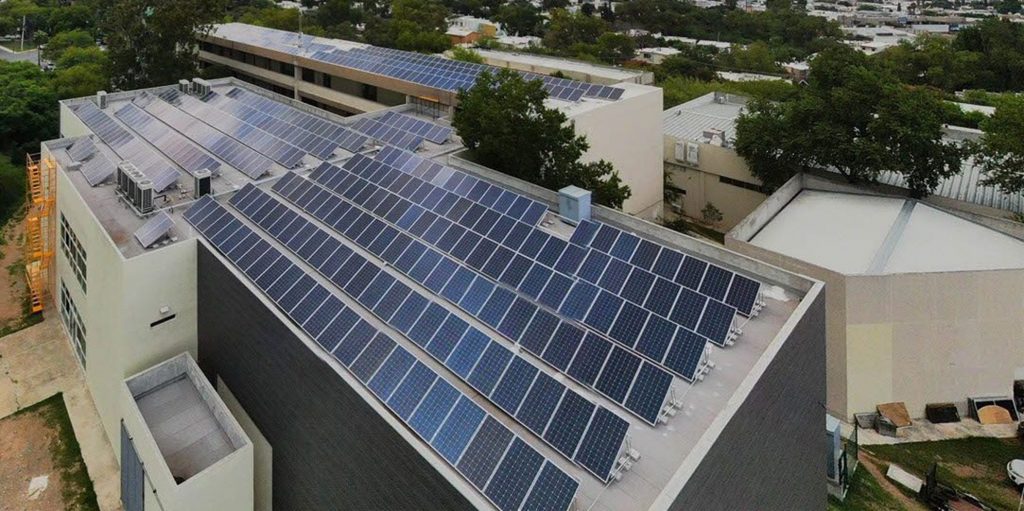Energy
Efficient use of energy
La Universidad Autónoma de Nuevo León (UANL), como parte de su compromiso institucional con la sustentabilidad ambiental y la eficiencia en el uso de los recursos, opera desde hace más de 10 años el programa de Uso Eficiente de la Energía. Este programa tiene como objetivo reducir el consumo energético en las instalaciones universitarias, a través de la implementación de estrategias técnicas y operativas orientadas al ahorro de energía, la incorporación de fuentes renovables, y el uso de equipos de alta eficiencia energética.
El programa responde a la necesidad de transitar hacia modelos sustentables de consumo energético, alineados con los Objetivos de Desarrollo Sostenible (ODS), particularmente con el ODS 7 (Energía asequible y no contaminante) y el ODS 13 (Acción por el clima). Su implementación no solo permite disminuir los impactos ambientales asociados al uso intensivo de energía, sino que también fortalece la cultura de responsabilidad ambiental dentro de la comunidad universitaria.
Estrategias de ahorro energético
Uno de los pilares del programa es la reducción del consumo energético mediante la aplicación de medidas de eficiencia en el uso de la energía. Entre estas se encuentra el uso eficiente de equipos y la adopción de buenas prácticas en el uso de la energía, como el apagar equipos eléctricos al finalizar la jornada, la desconexión de dispositivos en desuso y el ajuste de horarios de funcionamiento de los sistemas de climatización e iluminación, entre otros.
Adicionalmente, se ha trabajado en el diseño e implementación de sistemas de medición y monitoreo automatizados, que permiten registrar y analizar el consumo energía por edificio, área o dependencia. Esta información resulta de suma importancia para identificar patrones de uso, detectar ineficiencias y aplicar acciones correctivas de manera oportuna.
Asimismo, se han desarrollado campañas de concientización dirigidas a estudiantes, docentes y personal administrativo, con el propósito de fomentar una cultura institucional de uso responsable de la energía.



Incorporación de fuentes de energía renovables
El segundo eje del programa se enfoca en la incorporación progresiva de energías renovables en las instalaciones universitarias. Principalmente, se ha impulsado la generación de energía fotovoltaica mediante la instalación de sistemas de paneles solares en techos de edificios.
Estos sistemas permiten transformar la radiación solar en electricidad, la cual es utilizada directamente en las actividades operativas de las dependencias. De esta forma, se reduce el consumo de energía proveniente de fuentes fósiles y se minimizan las emisiones de gases de efecto invernadero (GEI), contribuyendo al combate del cambio climático.
La energía generada a través de estos sistemas también se incorpora como herramienta didáctica en programas académicos relacionados con ingeniería, arquitectura y ciencias ambientales, facilitando el aprendizaje práctico sobre tecnologías limpias.
Adicionalmente se impulsa la realización de acciones piloto para incorporar otras fuentes renovables, como energía solar térmica, eólica y sistemas híbridos, dependiendo de las condiciones específicas de cada campus y sus necesidades energéticas.

Modernización de equipos
El uso de sistemas climatización e iluminación de lata eficiencia es otro componente clave del programa. En este sentido, se ha impulsado la sustitución progresiva de equipos obsoletos por tecnologías de alto rendimiento energético. En materia de climatización, se han incorporado sistemas con compresores de velocidad variable, refrigerantes ecológicos y controles automatizados de temperatura, lo que permite mantener condiciones adecuadas de confort térmico con un menor consumo eléctrico.
En lo referente a iluminación, se ha realizado la transición hacia luminarias con tecnología LED, las cuales presentan una mayor vida útil, reducen significativamente la demanda energética y mejoran la calidad de la iluminación en espacios interiores y exteriores. Estas luminarias han sido complementadas con sensores de presencia y temporizadores, que permiten activar la iluminación únicamente cuando es requerida, eliminando consumos innecesarios.
Estas acciones han sido aplicadas tanto en edificios académicos como administrativos, bibliotecas, laboratorios, auditorios y áreas deportivas, logrando una mejora sustancial en la eficiencia energética de la infraestructura universitaria.

Panel de Control
El Panel de Control recopila información proveniente de medidores inteligentes y sensores instalados en puntos estratégicos, lo que permite identificar patrones de consumo, detectar anomalías y evaluar el impacto de las acciones de ahorro implementadas. Además, permite generar reportes comparativos por periodos, lo cual es útil para establecer metas y evaluar resultados.
Entre los beneficios más relevantes de este sistema destacan la reducción en el consumo eléctrico, el ahorro en costos operativos, y la disminución de emisiones de gases de efecto invernadero. Asimismo, fortalece la transparencia institucional y promueve una cultura de uso racional de la energía entre la comunidad universitaria, al ofrecer información clara, accesible y en tiempo real sobre el desempeño energético de las instalaciones.
Alcances del programa
El Programa de Uso Eficiente de la Energía tiene un alcance transversal en toda la estructura universitaria. Se encuentra implementado en los todos los campus y unidades académicas, incluyendo preparatorias, facultades, centros de investigación y oficinas administrativas. Además, el programa está integrado en los sistemas de gestión ambiental de la universidad, asegurando su seguimiento, evaluación y mejora continua.
También se han establecido indicadores clave de desempeño energético, con los cuales se evalúan los avances y se generan reportes periódicos que facilitan la toma de decisiones. Esta estrategia de gestión basada en evidencia permite medir con precisión el impacto de las acciones implementadas y establecer nuevas metas de eficiencia energética a corto, mediano y largo plazo.
Beneficios del programa
Los beneficios derivados del Programa de Uso Eficiente de la Energía de la UANL se manifiestan en diversas dimensiones. Desde el punto de vista ambiental, la disminución del consumo de energía y la adopción de fuentes renovables contribuyen directamente a la reducción de la huella de carbono institucional.
Esto fortalece el compromiso de la universidad con el desarrollo sustentable y la mitigación del cambio climático. En términos económicos, la eficiencia energética se traduce en importantes ahorros operativos, ya que se reduce el gasto asociado al consumo eléctrico. Estos recursos pueden ser canalizados a otros rubros prioritarios, como infraestructura educativa, becas o proyectos de investigación.
En el ámbito académico y social, el programa fomenta la participación de la comunidad universitaria en la construcción de un modelo energético sustentable, al tiempo que promueve la generación de conocimiento y tecnologías aplicadas al uso eficiente de la energía.
En conjunto, este programa posiciona a la UANL como una institución de educación superior responsable, innovadora y comprometida con la sustentabilidad, consolidando su papel como referente nacional e internacional en la gestión energética universitaria.
426 kWh de consumo per cápita de energía en 2024
Gas
The UANL, committed to the environment and safety, operates a permanent program to verify the operation and compliance with safety measures of facilities that use Natural Gas or LP, in accordance with those established in the regulations.NOM-002-SECRE-2010for Natural Gas andNOM-004-SEG-2004 for LP Gas, which has made it possible to detect and correct various types of failures in this type of installations.
Additionally, actions are carried out to reduce the consumption of natural gas, in addition to reducing the risk when turning on equipment that uses this type of fuel, through the verification of the carburetion of boilers and ovens, the installation of regulators in the intakes. of natural gas, as well as the installation of meters with electro-correctors, which allows the measurement to take into account the flow and supply pressure, which has generated significant annual savings in Ciudad Universitaria and the Life Sciences campus. Health.


